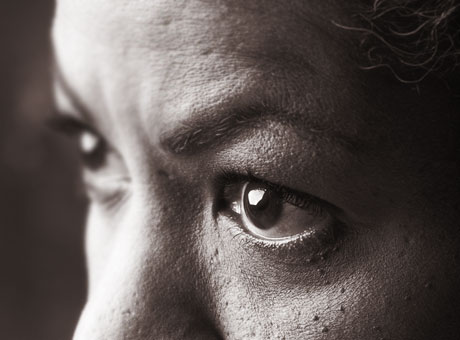
Glaucoma is the leading cause of blindness among African Americans.

Glaucoma is the leading cause of blindness among African Americans.
Measuring oxygen during eye surgery, investigators at the School of Medicine have discovered a potential explanation of why African Americans have a higher risk of glaucoma than Caucasians.
They found that oxygen levels are significantly higher in the eyes of African Americans with glaucoma than in Caucasians with the disease. The researchers, who reported their findings in the July issue of the Archives of Ophthalmology, suspect that more oxygen may damage the eye’s drainage system, resulting in elevated pressure that can damage the optic nerve, causing blindness.
The study provides the first physiologic clue about the link between race and risk for glaucoma. Compared to Caucasians, glaucoma is about six times more common in African Americans, and blindness caused by glaucoma is roughly 16 times more likely.
“Our findings suggest there may be physiologic differences in oxygen metabolism between African Americans and Caucasians,” says first author Carla J. Siegfried, MD. “In our studies, we were not looking specifically at African Americans, but the racial difference in oxygen levels was significant, and we believe this observation deserves further study.”
There may be physiologic differences in oxygen metabolism between African Americans and Caucasians.
Siegfried, professor of ophthalmology and visual sciences, says it’s not surprising that oxygen may play a big role in the development of glaucoma because it may be a source of free radicals that damage cells. Like cataracts, glaucoma is a disease associated with aging. Oxidative stress, an imbalance between these free radicals and antioxidants, is linked to the aging process and many other age-related conditions like cardiovascular and neurodegenerative diseases.
“We began studying oxygen in the eye after our basic studies showed that it was tightly regulated there, with the lowest levels near the lens,” says David C. Beebe, PhD, the Janet and Bernard Becker Professor of Ophthalmology and Visual Sciences and professor of cell biology and physiology. “Clinical studies with Nancy Holekamp [MD, professor of clinical ophthalmology and visual sciences] and Ying-Bo Shui [MD, PhD, senior scientist] revealed that exposure of the lens to excess oxygen caused the most common kind of cataracts. And our discovery about cataracts led us, somewhat surprisingly, to glaucoma. Dr. Siegfried then joined us, confirming the connection between oxygen and glaucoma, and the link between oxygen and race was yet another surprise.”
Siegfried says it is not yet possible to say whether the elevated oxygen levels cause pressure to rise and optic nerve damage to occur. Her team has received a four-year grant from the National Eye Institute to further investigate that association.